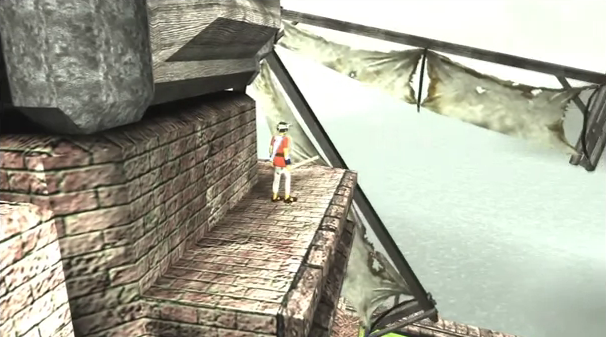vgthought.com
The Bossy Camera in Ico
Posted: 2014-02-28 09:51:47
Last edited: 2014-02-28 10:04:57
Originally posted here: Spiderduck Network
Last edited: 2014-02-28 10:04:57
Originally posted here: Spiderduck Network
I originally published this on Empty Wallet Gamer (which later became the Spiderduck Network) on April 23, 2012.
This essay tries to apply cinematographic analysis to games; Ico in specific. I'm not certain these musings stand on solid ground, though. I've sought criticism on this piece, but I've never quite grasped that criticism. It doesn't help that I have little to no background in film theory.
I still get a kick out of showing this to folks, though. They always go, "Aww, the windmill puzzle!" That's frustration, not excitement.
This essay tries to apply cinematographic analysis to games; Ico in specific. I'm not certain these musings stand on solid ground, though. I've sought criticism on this piece, but I've never quite grasped that criticism. It doesn't help that I have little to no background in film theory.
I still get a kick out of showing this to folks, though. They always go, "Aww, the windmill puzzle!" That's frustration, not excitement.
Games discussed:
Ico
In film, you see through the cameraís eye. Youíre influenced by how the camera moves, how itís positioned, and how it transitions between scenes. It tells you what to focus on, how to focus on it, and how long to focus on it.
As with many games, the same is true of the camera in Ico.
The camera is fixed, following the player as it pleases. For instance, as you travel down one bridge, the camera may see fit to back off and give a wide view; on another bridge, the camera may follow closely from the side. For any given scenario, the camera only provides one way of seeing it.
The camera uses this to show you solutions to puzzles.

For instance, here, the camera focuses on windmill blades as they pass.
It may seem impossible to continue from here, as the only way to progress is further up the windmill. Until this point, youíve had ledges to climb up the windmill, but it looks like thereís nothing else you can climb here.
The camera takes this opportunity to show you one last thing you can use to ascend: the windmill blades. From here, youíve got to make a brave leap onto the wooden beam of a blade and ride it up to the top.
Standing in the position depicted above, you might ask where to go next. The camera answers silently by pointing itself at the windmillís blades.
Once you realize the camera always highlights your next move, Ico is a cinch. Itís almost as if the camera is a divine force, giving the main character, Ico, some nameless inspiration to look this way or that.
Interestingly enough, if you go off the beaten path, there are sometimes tons of ledges you can climb, but thereís never any reason to do so. Without the cameraís direction, you might end up exploring a number of possibilities that lead nowhere.
For instance, behind the windmill is a wall with ledges that you can climb over a deep pit. The ledges donít reach the other side, making them dead ends. The camera never draws your attention to those ledges, though, instead favoring the windmill.
When compared to film, the relationship between Ico and his camera is striking. In film, characters act independently of the camera. No one is aware of being watched, and no one is aware of how the camera portrays him or her.
In Ico, the character Ico is your avatar. Heís your method for interacting with the gameís world. The camera, on the other hand, is more or less out of your control. Youíre given an opportunity that film characters donít have: you can react to the camera that views you.
In theory, this might sound like a gesture of freedom. Film characters donít truly know whatís going on, while Ico has the opportunity to adapt to the fact that heís being watched.
In practice, itís a gesture of fatalism. Thereís only one way through the game, and the camera knows it. It wonít change its position for anything. You can do whatever you want, but eventually, youíll have to listen to the camera if you want to move forward. Whenever you do progress, youíre just following the camera.
If the game Ico had a freely controllable camera, there might be a larger sense of independence and exploration.
Taking the camera out of the playerís control not only gives Ico the ability to help out by keeping the playerís focus on a puzzleís solution, it also takes away a certain amount of power from the player.
On a side note: Shadow of the Colossus is the counterpoint to Ico in many ways, and the camera is no exception. You can rotate the camera freely around Wander at any point, and while the camera can focus on a colossus, itís entirely under your controlóa function mapped to the L1 button.
comments powered by Disqus
All original content on VG Thought was written by Greg Livingston AKA Golem.